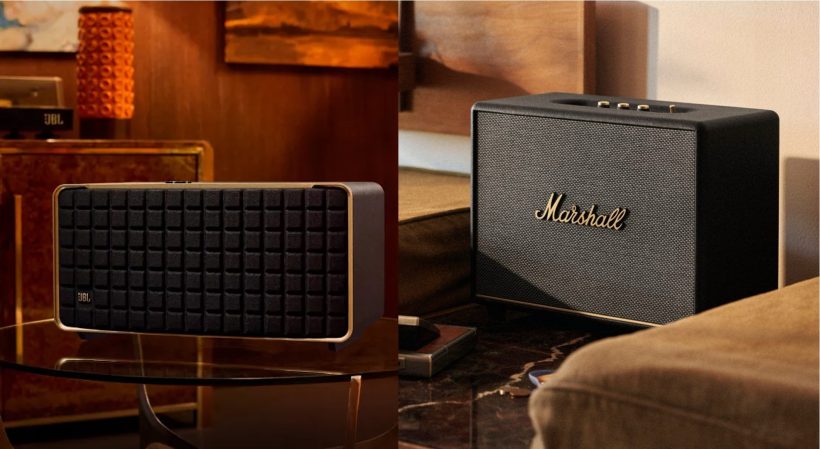The JBL Authentics 500 is a premium smart retro speaker from JBL that blends together a unique retro design and modern features with great sound, and is the most powerful speaker in the JBL Authentics speaker line (compared with the JBL Authentics 300 and 200). This large speaker measures 17.6 x 9.4 x 10 inches and is quite a large speaker that requires ample space. The speaker is equipped with a 3.1 sound system with three 25mm tweeters, three 2.75-inch midrange woofers, and a 6.5-inch down-firing subwoofer which delivers a total power output of 270 watts. It supports various connectivity options including Wi-Fi, Ethernet, Bluetooth 5.3, and integrated music services like Tidal, Amazon Music, and Napster. The JBL Authentics 500 was released on 30 August 2023 and is a much newer speaker compared to the Marshall Woburn III (which was released on 6 December 2022).
The Marshall Woburn III is a wired home speaker which has a really nice signature retro-style design reminiscent of Marshall’s iconic guitar amps. This speaker has a dimension of 12.5 x 15.8 x 8.0 inches and a weight of 16.4 pounds and has a classic vintage speaker vibe which complements any modern home interior décor. The speaker features a three-way driver system including a 90W subwoofer, two 15W midrange drivers, and two 15W tweeters, and has a wide frequency range of 35Hz to 20KHz for a rich and immersive audio experience.
Both the JBL Authentics 500 and the Woburn III are top of the line speakers that deliver the most power and sound output when it comes to the Bluetooth speaker segment. The Marshall Woburn III is much more powerful than its closest counterpart the Marshall Stanmore III and is built for larger home living spaces with an aesthetic vintage design. Similarly, the JBL Authentics 500 is the most powerful speaker compared with the Authentics 300 and 200 giving more wattage and is also equipped with a dedicated woofer for deep bass performance. When it comes to power output and wattage, both the JBL Authentics 500 and the Woburn III are top of the line speakers but they do have some differences when it comes to comparing the sound performance between the two.
Read more: JBL Authentics 500 Review: Old School with Big Sound
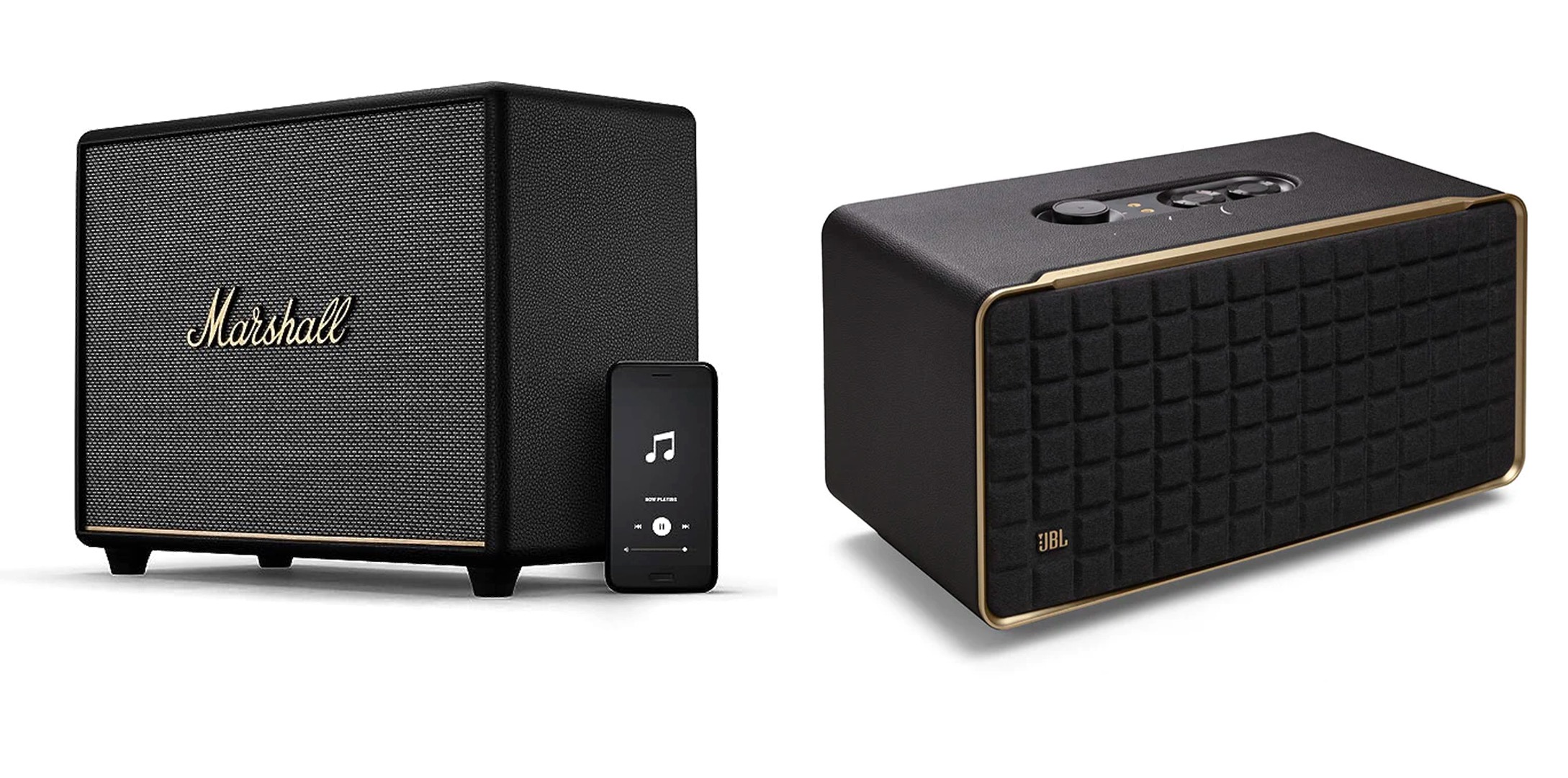
Comparing the Specs
| Specification | JBL Authentics 500 | Marshall Woburn III |
| Dimensions (inches) | 17.6 x 9.4 x 10 | 12.5 x 15.8 x 8.0 |
| Weight (lbs) | 25.1 | 16.4 |
| Driver System | 3.1 | Three-way |
| Tweeters | Three 25mm | Two 15W |
| Midrange Woofers | Three 2.75-inch | Two 15W |
| Subwoofer | 6.5-inch | One 90W |
| Total Power Output (W) | 270W | 150W |
| Frequency Range (Hz) | 40 – 20,000 | 35 – 20,000 |
| Connectivity | Wi-Fi, Ethernet, Bluetooth, USB-C | Bluetooth, 3.5mm, RCA, HDMI |
Sound Performance Comparison
In terms of sound performance, the JBL Authentics 500 delivers really powerful bass and room-filling sound quality – the bass output from this speaker is much deeper and more impactful than the Woburn III speaker. The bass reproduction is deep and impactful without overshadowing other elements of the music, providing a balanced audio experience even though the bass has a lot of depth. The treble remains crisp and clear even when handling thumping basslines, ensuring an enjoyable listening experience across various genres. The speaker’s volume levels are impressive, with the downward-pointing subwoofer delivering a powerful bass response that can be felt in the chest.
We played a couple of EDM and hip-hop sound performances through the JBL Authentics 500 speaker and they sounded really nice and punchy with a well-rounded bass performance. Ed Sheeran’s “Shape of You” sounded very punchy with really nice beats and detailed midranges; vocals sound crisp and clear and surprisingly bright. The Authentics 500 has a V-shaped sound signature which really brings out of the bass and the highs, but the bass performance of the Authentics 500 feels stronger and much deeper than the Woburn III.
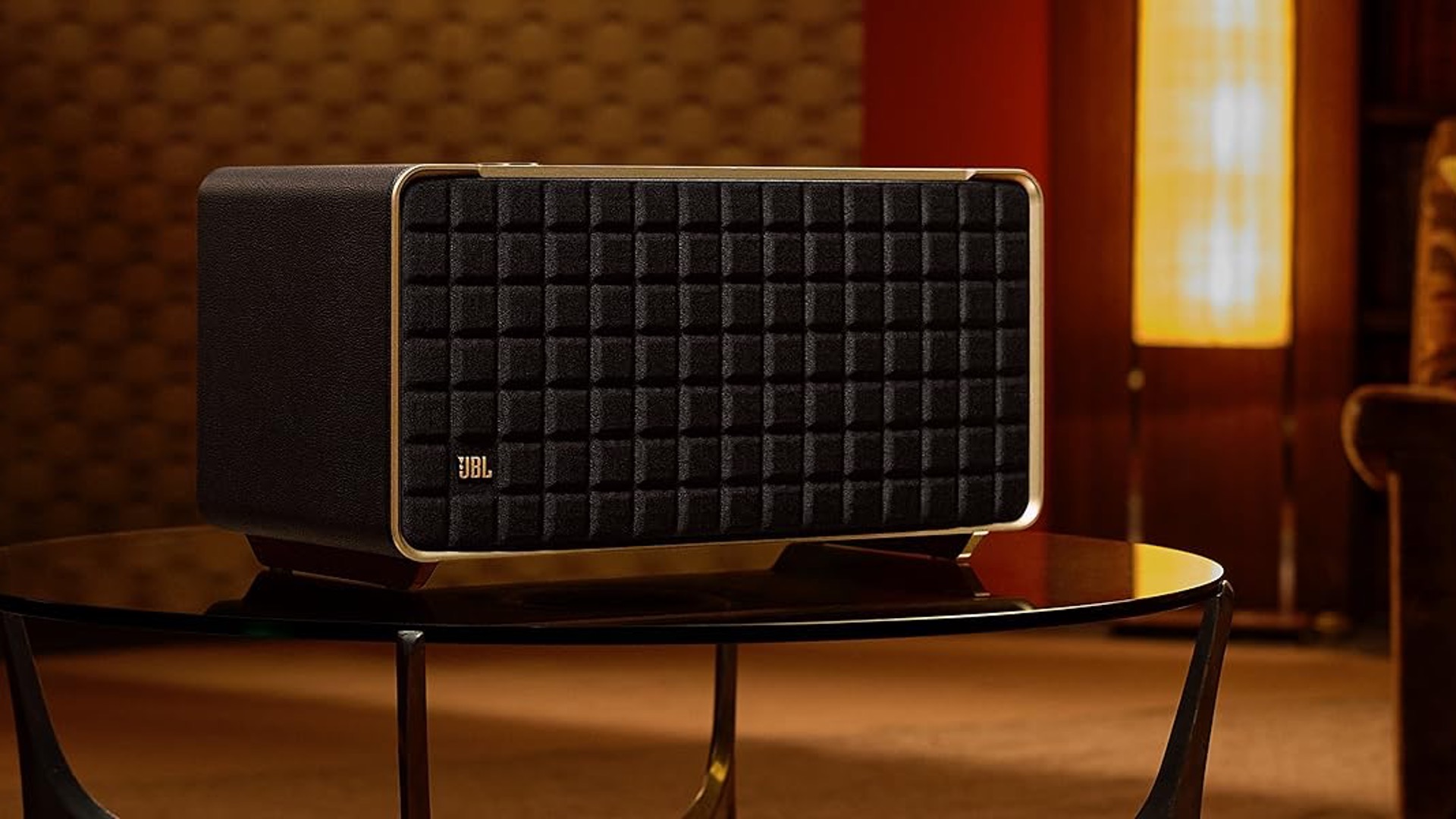
Compared with Marshall Woburn III speaker, the Woburn III delivers powerful 150W of audio output with deep bass and extended low frequencies that anchor the sound without overpowering other elements. The speaker’s bass-forward digital signal processing (DSP) delivers pretty strong bass and crisp midranges, allowing it to deliver bass that feels present and solid even at low volumes for a dynamic listening experience. The speaker’s placement compensation tool optimizes sound output based on its positioning in the room, providing an enhanced listening experience tailored to the environment.
When we played Ed Sheeran’s “Shape of You” on the Marshall Woburn III, we felt that the sound felt more vintage and warm as compared to the Authentics 500. There is a warmer tint to the sound and especially at the higher frequency ranges where vocals feel a tad warmer with a more vintage sound signature, but it has otherwise a really smooth sound signature and handles the midranges and lower-bass ranges nicely. The bass on the Woburn III hits hard and it definitely has much more punch compared to its smaller counterpart the Stanmore III, but the sound feels natural and warm. We would say that the Marshall Woburn III has a much more vintage sound and warm coloration at the top-end of the frequency spectrum as compared to the Authentics 500, which feels brighter and crisper at the high-end.
Read more: Marshall Woburn 3 Review Full In-depth Guide
We liked the fact that the Marshall Woburn III delivers faithful and enjoyable audio quality that works well at both high and low volumes. It provides a room-filling soundstage with nuances and details that bring music to life, making music (especially live jazz performances) sound immersive and engaging.
Although the JBL Authentics 500 is clearly the more powerful speaker here with a much more powerful wattage and deeper bass, we can’t help but like the vintage warmth that the Woburn III speaker delivers which makes it a really unique speaker to have. Live jazz performances by Tony Bennet and Dusty Springfield just sounded a tad more interesting on the Woburn III with its vintage warm character especially at the upper frequency ranges and vocals. While the Authentics 500 has a silky and crisp sound signature and feels rather bright at the highs, the Woburn III has a more distinct vintage flavor which makes it stand out.
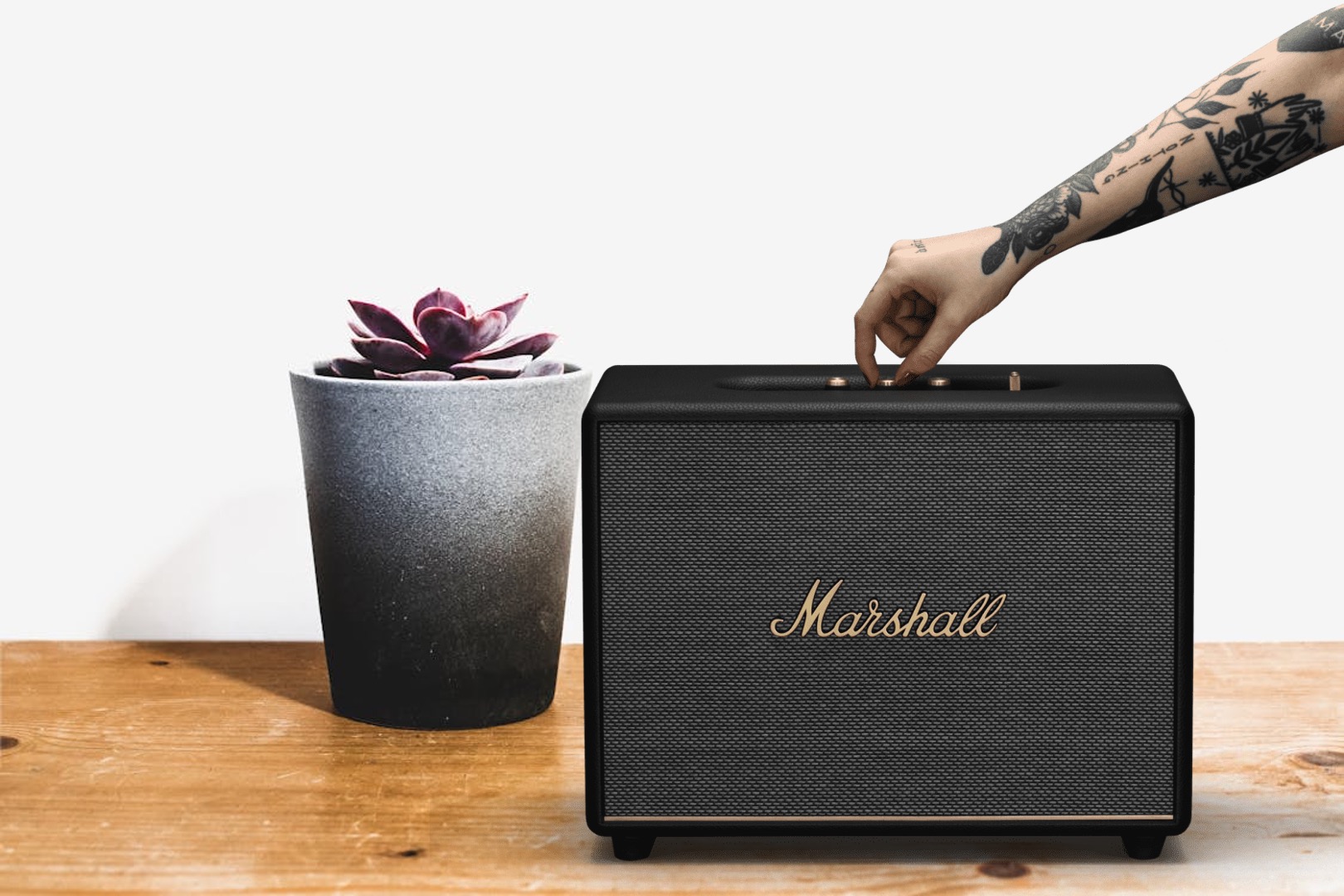
Design and Specs
In terms of dimensions, the JBL Authentics 500 measures 447 x 240 x 255.7 mm (W x H x D) and weighs 7.8 kg. It supports both 2.4G and 5G Wi-Fi frequencies, along with Bluetooth version 5.3 for seamless wireless connectivity. The speaker is designed with attention to sustainability, incorporating recycled materials such as 85% recycled plastics and 50% aluminum in its construction.
In terms of specs, the JBL Authentics 500 clearly has more features with built-in Wi-Fi with Airplay support and Qplay functionality which allows you to stream music through these apps wirelessly. The Woburn III does not have any Wi-Fi support and uses Bluetooth or direct HDMI connectivity to play music. You also the option of further personalizing your audio with in-app controls which allow you to adjust the bass and treble levels – or use the JBL app to customize EQ settings.
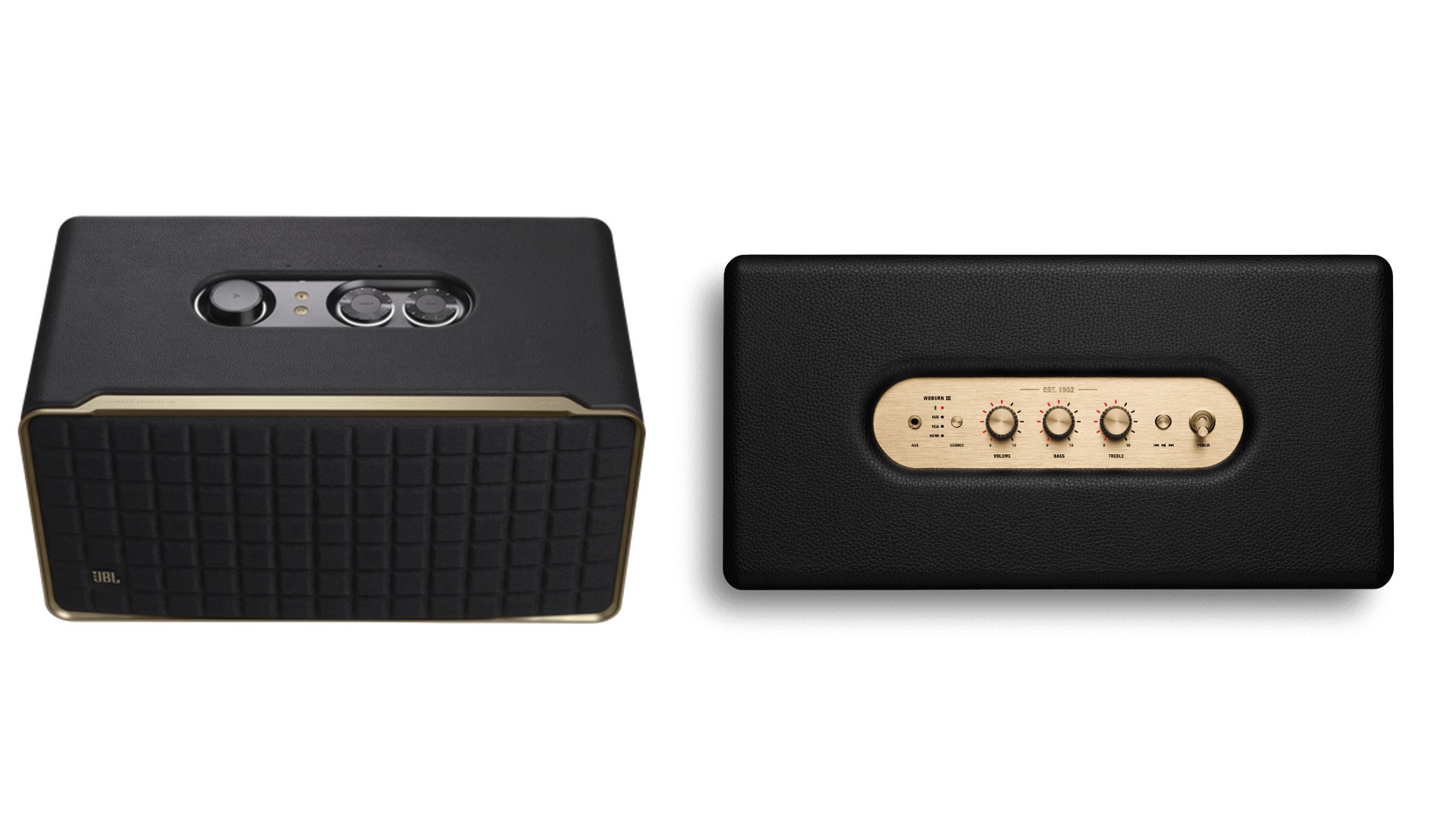
The Marshall Woburn III by contrast features a vintage-looking front fret, brass control knobs, and the signature “Marshall” logo, this speaker exudes a retro vibe. The Woburn III employs a 3-way driver design with 150 watts of Class D amplification, comprising two 0.75″ dome tweeters, two 2.0″ cone midrange drivers, and a 6″ cone woofer for dynamic stereo sound with crisp vocals and deep bass response. Compared to the JBL Authentics 500, the Woburn III feels like a more “hands-on” speaker which allows you to tinker with the sound quality (treble, bass and volume) just by turning the knob, which adds to its vintage feel and aesthetic. In many respects, the Marshall Woburn III speaker feels like a handling a turntable and we really liked the ability to make hands-on adjustments by turning a physical knob rather than through the app.
In terms of dimensions, the Woburn III measures 15.75″ in width, 12.5″ in height, and 9″ in depth, and weighs approximately 16.42 lbs. It features bass and treble control knobs on the top panel for fine-tuning high and low frequencies, along with Dynamic Loudness that adjusts tonal balance at different volume levels. The speaker also offers Night Mode through the Marshall Bluetooth App to balance sound levels for quiet listening environments.
The Verdict?
If pure sound power and bass is what you are looking for, the JBL Authentics 500 would be a definite better choice. This speaker pumps out an incredible 270W of output power and is even louder and bass-heavy as compared to the JBL Boombox 3 – it’s a massive speaker designed for large living room spaces where you can confidently blast music and enjoy the crisp highs with deep punchy beats. In terms of sound signature, the JBL Authentics 500 has a more V-shaped curve and has a really good emphasis on the bass and lower-end frequency ranges.
Having said that, the Marshall Woburn III delivers a kind of unique vintage warmth that also makes it a really appealing speaker in terms of character and personality. It’s not a boring speaker that delivers just punchy bass and clear highs – it adds vintage warmth to the entire sound signature which makes oldies and classical live jazz performances sound so appealing and warm. Vocals sound much more engaging and definitely more entertaining to listen to as compared to the JBL Authentics 500, and while the Authentics 500 has much more bass and power, it lacks the kind of vintage sound profile that the Woburn III has that makes it stand out from the crowd.
You won’t go wrong with either the JBL Authentics 500 or the Marshall Woburn III speaker, but if I had to choose (and if you are a more hands-on person with your audio), I would pick the Woburn III for its more interesting vintage warmth and character.

